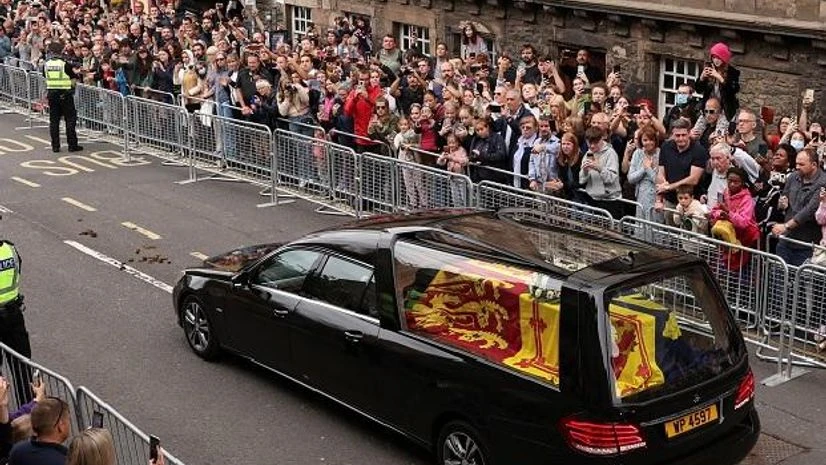King Charles III flew to Northern Ireland on Tuesday on the latest leg of his tour of the four parts of the United Kingdom, where crowds of well wishers gathered to greet him in a region with a contested British and Irish identity that is deeply divided over the British monarchy.
In the latest outpouring of affection since Queen Elizabeth II's death last Thursday, hundreds of people were lining the street leading to Hillsborough Castle, the royal family's official residence in Northern Ireland, just outside Belfast. The area in front of the gates to the castle was carpeted with hundreds of floral tributes.
On Monday night, Charles and his siblings, Anne, Andrew and Edward, their heads bowed, briefly stood vigil around their mother's flag-draped coffin in St. Giles' Cathedral as members of the public filed past.
Earlier, a man wearing a suit adorned with medals stood silently, bowed his head and moved on. A woman dabbed away tears with a handkerchief. Another woman with two young children in their school uniforms walked slowly past the coffin.
In the line of mourners outside St. Giles' Cathedral in the historic heart of Edinburgh, Sheila McLeay called the queen a wonderful ambassador for our country.
Also Read
"She was such an example for every single one of us. She was dignified. She was just, she was beautiful inside and out. And I have known her all of my life. And I miss her very much, she added.
Scotland, where the queen died Thursday at her beloved Balmoral estate in the Highlands after a 70-year reign, has been almost universal in its praise for the queen.
The British monarchy draws more mixed emotions in Northern Ireland, where there are two main communities: mostly Protestant unionists who consider themselves British and largely Roman Catholic nationalists who see themselves as Irish.
That split fueled three decades of violence known as the Troubles involving paramilitary groups on both sides and UK security forces, in which 3,600 people died. The royal family was touched personally by the violence: Lord Louis Mountbatten, a cousin of the queen and a much-loved mentor to Charles, was killed by an Irish Republican Army bomb in 1979.
A deep sectarian divide remains, a quarter century after Northern Ireland's 1998 peace agreement.
But in a sign of how far Northern Ireland has come on the road to peace, representatives of Sinn Fein the main Irish nationalist party, linked during the Troubles to the IRA are attending commemorative events for the queen and meeting the king on Tuesday.
Sinn Fein's president, Mary Lou McDonald, paid tribute to the 96-year-old monarch following her death last Thursday, calling her "a powerful advocate and ally of those who believe in peace and reconciliation."
The president and prime minister of the neighbouring Republic of Ireland are also due to attend the memorial service in Belfast, despite tense relations between Dublin and London over Brexit. Since Britain left the European Union in 2020, the UK and the EU have been wrangling over trade rules for Northern Ireland, the only part of the UK that shares a border with a member of the bloc.
After lying in the cathedral through most of Tuesday, the queen's coffin will be flown back to London and driven to her official London home, Buckingham Palace.
The Royal Air Force C-17 Globemaster plane that will carry the coffin has in the past been used to evacuate people from Afghanistan and to take humanitarian aid and weapons to Ukraine following Russia's invasion, UK Air Chief Marshal Sir Mike Wigston said.
In the early hours of Tuesday, scores of workers were seen cleaning litter and weeds from the road between the air force base where the plane carrying the queen's coffin will land and central London.
(Only the headline and picture of this report may have been reworked by the Business Standard staff; the rest of the content is auto-generated from a syndicated feed.)

)
